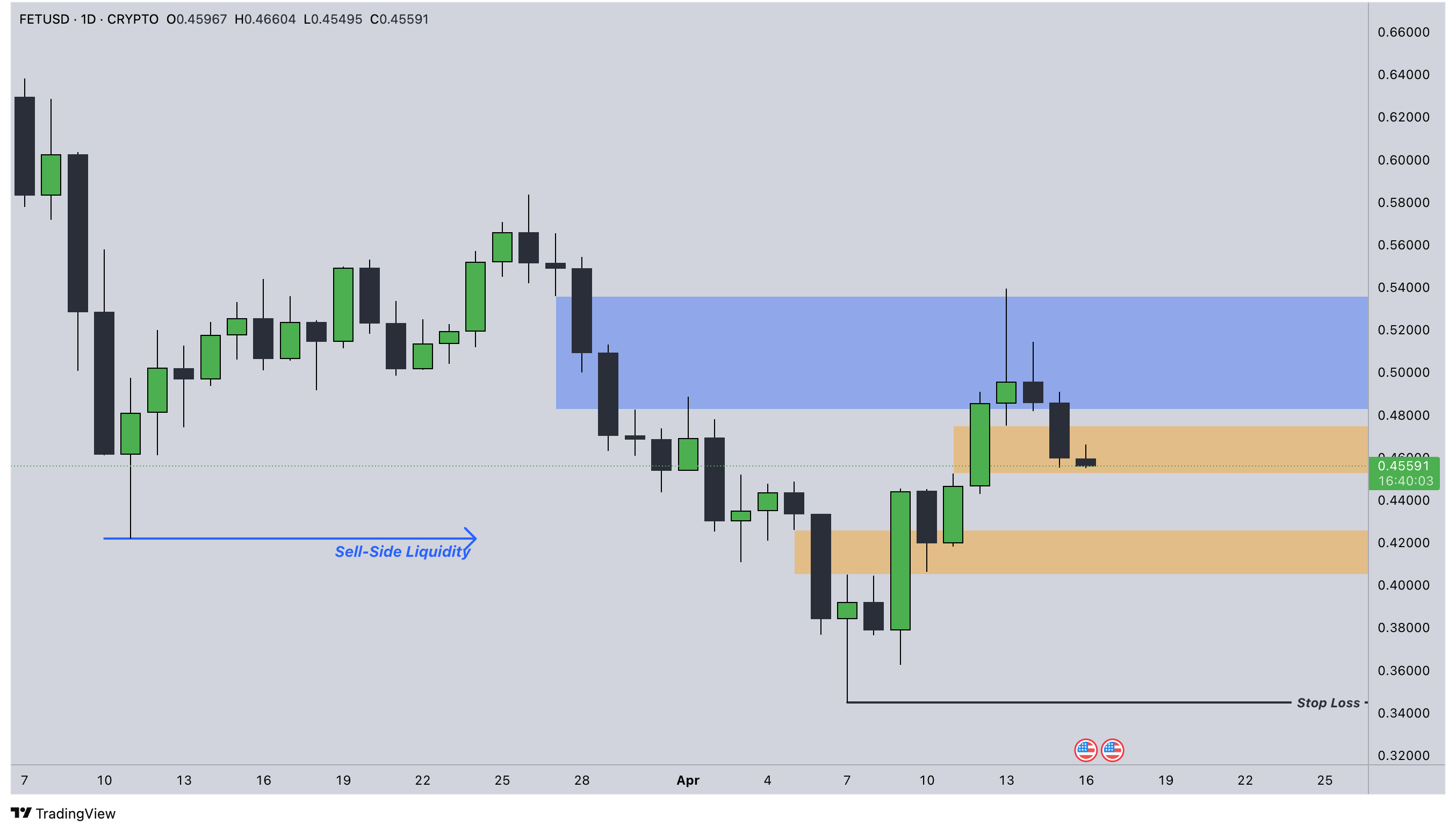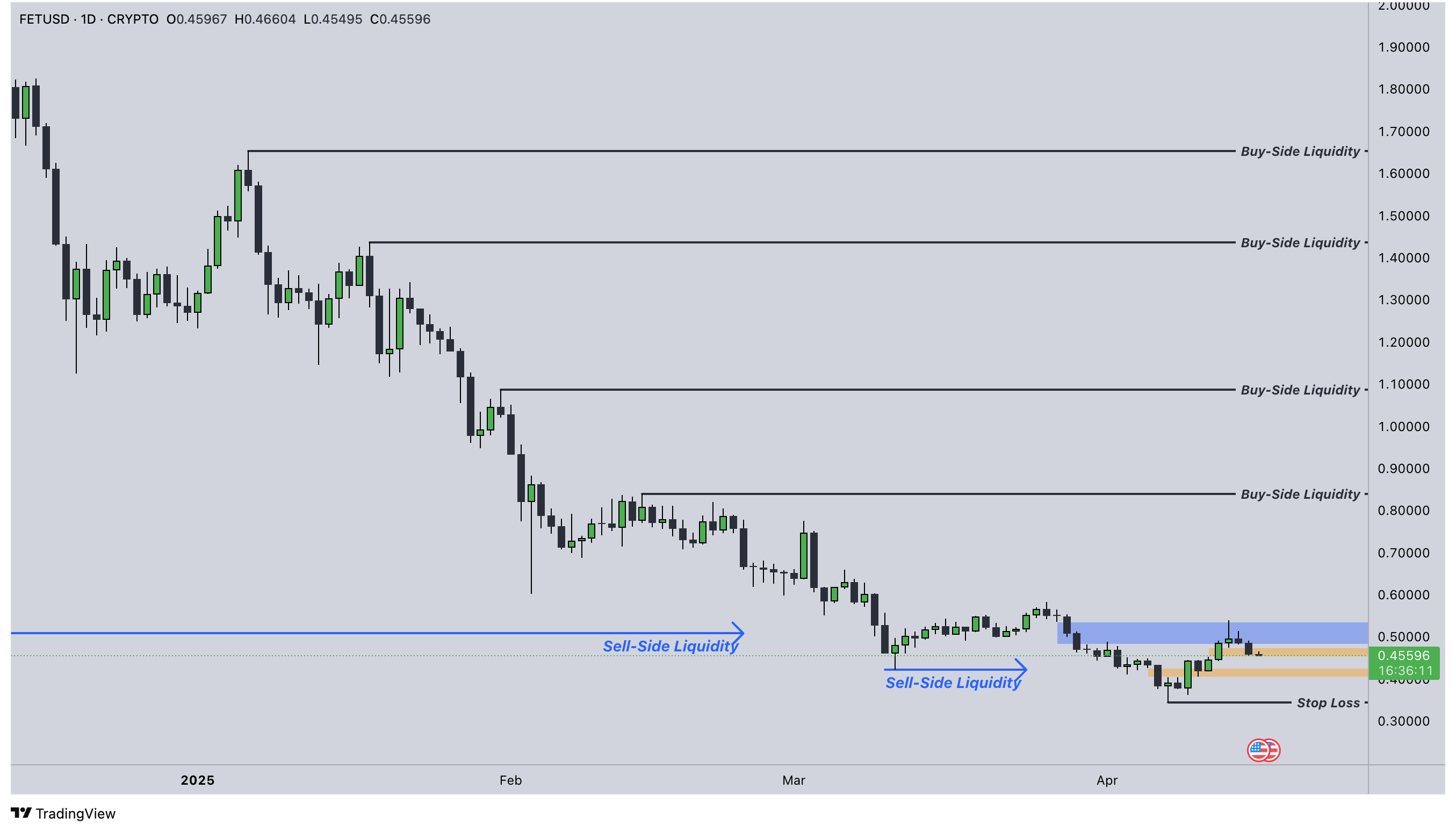Is Fetch.ai Bullish or Bearish?

In light of the recent recent price movements of Bitcoin, it’s apparent that the cryptocurrency market has entered a slowdown phase following last year’s strong bullish momentum.
This type of consolidation is a natural and healthy part of market cycles. It’s a period when investors and traders would be wise to exercise caution — avoiding unnecessary risks while strategically accumulating capital.
For those still looking to capitalize on the current market conditions — particularly in the altcoin space — Fetch.ai (FET) offers a compelling opportunity.
In today’s analysis, we’ll explore both the bullish and bearish scenarios for its development, along with the key levels traders should monitor before taking action.
Daily time frame analysis

FETUSD - 1 Day Time Frame
The price is currently showing early signs of bullish momentum, but it’s important to recognize that it is also testing a key resistance zone, marked in blue. As a result, both bullish and bearish outcomes remain in play in the near term.
If the likelihood of a decline increases, traders may consider entering short positions — but preferably if the daily candle closes below the lower orange support zone. This would signal renewed bearish price delivery and a breakdown of the current market structure.
Conversely, if the price holds above both support zones and achieves a daily close above the blue resistance zone, that would serve as a more favorable signal for a buy entry. In this scenario, the position could be protected with a Stop Loss placed below the internal lower low, as illustrated on the attached chart.
Fetch.ai price target

FETUSD - 1 Day Time Frame
If the buy setup is confirmed, the logical upside targets are the Buy-Side Liquidity levels, with the final target being this year’s high. From our perspective, it is strongly recommended to take partial profits as the price reaches each liquidity level.
While holding the entire position until the final target may be tempting, it comes with considerably higher risk. If the price rises partway and then reverses — triggering the Stop Loss — traders may walk away with no gains, or even a loss that could have been avoided.
A measured, step-by-step profit-taking strategy not only reduces exposure to reversal risk but also ensures that profits are gradually secured as the trade moves in your favor.

Try to invite your friends and earn together
10% of trading fees of your friends and 5% from the earnings of your friends.

